2 Examples of Companies Using AI Chatbots in Their Recruiting
AI Recruitment Chatbot Best Chatbot for Recruitment

Because task-focused attraction bot conversations typically do not offer many exchanges, the recruiter is forced to think what the essential aspects are that should, at a minimum, be covered. In the end, we had a few participants from both food and technology industries and several from organizations that provide personnel services. Notably, the two people who were working with recruitment bot solutions (P6 and P10) were from small-sized companies. To understand recruiters’ subjective experiences and expectations, we conducted 13 in-depth, semi-structured expert interviews with people from different types of organizations.
The best chatbots for recruiting are the ones that solve your specific recruiting process for your candidates, your specific company workflows, and integrate into your existing ATS and technical stack. In nearly all cases, chatbots are customizable, so the best chatbot for your recruiting process and your candidate experience is the one that can be configured for your recruiting needs. Below are several recruitment chatbot examples as well as companies using chatbots in recruitment and how they’re implementing automation. There are lots of different types of recruitment chatbots and how they can automate certain steps in the recruiting process. But chatbots don’t forget to ask crucial screening questions or mix up interview times. By automating these elements of the recruitment process, you’re essentially error-proofing it.
Recruitment Chatbots
This means each hour you pay them, they’re actually doing high-value work, building relationships, and hiring qualified candidates — saving you money with their newly acquired time. Being present on the message apps of those social media networks makes it simple for the talent to apply— attracting a broader talent pool. Making it easy for talent to apply to jobs is an important responsibility of the employers. Abolishing long complicated forms, resumes when possible, and superfluous demands on candidates is the way to get there. A bot allows employers to focus on the essential screening questions and make sure candidates can apply within just a few minutes.
HireVue is on the pricier side, however, and making candidates do an interview with a virtual assistant instead of a live human being may leave a bad taste in their mouth. Your recruitment strategy comprises many moving parts—job listings, marketing strategies, messaging, and more. In that case, it can cause a ripple effect that leads to fewer qualified candidates and longer hiring timelines. We can assemble all the components of a successful hiring strategy to reach a wider talent pool and hire the right fit more often.

A recruiting software can help reduce the burden on your busy team, while still providing answers and giving the impression that your business is responsive to potential employees—whether or not they end up getting the job. Another benefit is that chatbots and self-service tools like Dialpad’s Ai Virtual Assistant can be used on a variety of platforms, including websites, social media, and even messaging apps (like WhatsApp). This gives job seekers more opportunities to interact with the chatbot and learn about open positions.
Add the Best Recruiting Chatbot to Your Hiring Platform
Studies show that candidates want an experience that includes a balanced mix of technology and human interaction – not just one or the other. In reality, it’s a conversational interface (that looks like an instant messenger chat window) that helps carry out basic processes using artificial intelligence and machine learning. This could be something as simple as letting a recruiter know how many interviews they have that day to something more complex, like setting up interviews with candidates. They can automate repetitive tasks, improve response rates, and improve the candidate experience. In addition, they can be used in recruitment in a number of innovative ways, such as automating the initial screening process, conducting candidate interviews, and scheduling follow-up interviews.
Such messaging channel combined with a conversational UI seems like a promising way to communicate with the applicants but would of course require the job seekers to find and download the application. The ongoing march of chatbots into recruitment seems to have introduced interesting new tasks, risks, and dynamics, some of which can be regarded as unexpected consequences from the recruiter’s viewpoint. Important downsides include ending up with larger masses or seemingly unsuitable applicants as well as additional tasks for the recruiters. While the bots might seem autonomous in terms of interacting with the job seekers, recruiters actually need to pay much attention to predefining and coordinating their actions.
Are All Recruiters Using AI Chatbots?
Unlike conventional chatbot experiences, employing a self-service tool powered by conversational AI can deliver complex and nuanced answers and even escalate interactions to live recruitment staff. It’s important to remember that candidates want to feel like they are being heard and valued. To achieve this, you should personalise your chatbot experience as much as possible. Use the candidate’s name throughout the conversation, and tailor your responses to their specific questions and concerns. This will help candidates feel more engaged and invested in the recruitment process. Engage and collect applications in real time with our advanced solution.
Your next star employee might be scrolling through LinkedIn or other similar job search platforms in another country. It allows your HR team to cast a wider net by handling initial interactions and pre-screening in multiple languages and across various channels. Recruitbot features a friendly UI that engages candidates and a screening process that automatically qualifies candidates for the next process. It is also capable of accepting candidates’ resumes for further screening and it allows candidates to record and send an intro video.
Enhance Candidate Experience
Another concern of Hybrid.Chat in using such a solution was eliciting spontaneous responses to screening questions. Because candidates could simply Google the answers to questions when using Email for screening. Our team will design, build, and support a chatbot solution that’s tailored specifically to your business needs.
- Using a chatbot obviously has some drawbacks, most of which are related to its lack of human sensibility.
- Contact us to schedule your free consultation with our team of recruiting experts today.
- A recruitment chatbot is an AI-powered tool designed to automate various aspects of the hiring process.
According to a survey by Allegis Global Solutions, 58% of job seekers said they were comfortable interacting with chatbots during the job application process. In addition, it prioritises the best candidates by collecting the responses from the candidates and lessens the manual work for recruiters to do pre-screening calls. It helps reduce hiring time and cost by interacting and engaging with job seekers in a humanistic way. As a result, many staffing agencies and large recruitment firms started using this AI-powered talent acquisition tool to improve the candidate experience in the recruitment process. A recruitment chatbot – or “conversational agent” – is a software application designed to mimic human conversational abilities during the recruiting process. Chatbots are a great way to fill the space between human connection and technology.
It also has a built-in customer relationship manager (CRM) to manage and interpret candidate data. While the design of the product is a bit busy and cluttered, the way the chatbot is able to hold a human conversation makes it stand out from the crowd. It also has a special capability for blind screening in order to promote company diversity initiatives. AI recruitment, also known as AI-driven or automated recruitment, is the use of artificial intelligence and machine learning algorithms to streamline various stages of the hiring process. These AI-powered systems can handle tasks such as sourcing candidates, assessing resumes, conducting initial screenings, and even engaging with potential hires. In today’s fast-paced world, where technology is constantly advancing, the recruitment landscape has also undergone significant transformations.
It saves time by providing AI-powered functions that automatically manage, reschedule, and cancel different tasks for interviewers and candidates, making it more accurate and transparent. A recruitment chatbot can be a helpful tool for sourcing the best candidate for the open position. Also, It approaches passive candidates who are currently not looking for a job.
A How-To Guide For Using A Recruitment Chatbot
Candidates may become frustrated if they can’t understand the chatbot’s responses, or if the chatbot isn’t able to answer their questions adequately. Mya is also an AI-powered recruitment chatbot that can also do automatic interview scheduling, answer FAQs, and screen candidates. To further improve candidates’ experience, you can give your chatbot a personality that is in line with your company’s values and brand and successfully represents the company culture. For instance, giving a name to your bot and using a more relaxed tone of communication can encourage candidates to engage with the bot as it will feel more natural and resemble much more to a human interaction.
Why The Royal Navy Is Experimenting With An AI-powered … – The Drum
Why The Royal Navy Is Experimenting With An AI-powered ….
Posted: Mon, 17 Apr 2023 07:00:00 GMT [source]
In turn, work by Zabel and Otto (2021) examined the existence of algorithmic biases when designing chatbot dialogues. They found similarity-attraction of gender, meaning that there was a more positive affect when a person reading, and the designer of dialogue had the same gender. Similarly, Feine et al. (2019) showed that gender-spesific cues are commonly used in the design of chatbots.
E-recruitment refers to the use of corporate web sites, social media, and various other information systems (Chapman and Gödöllei 2017; Holm and Haahr 2019) in workforce hiring. Recruiting chatbots, also known as hiring assistants, are used to automate the communication between recruiters and candidates. After candidates apply for jobs from the career pages recruiting chatbots can obtain candidates’ contact information, arrange interviews, and ask basic questions about their experience and background. Recruiting chatbots are the first touchpoint with candidates and can gather comprehensive information about a candidate. If you’ve done even a basic Google search on recruitment chatbots, you’ve probably stumbled upon Olivia, which is incredibly popular.
According to a SHRM study from 2016, the average cost per hire is $4,129, and the average time it takes to fill a position is 42 days. A chatbot’s abilities to talk to multiple candidates at a time and scan thousands of resumes would likely reduce both of these figures. Additionally, chatbots could potentially help recruiters select the most qualified candidates with better precision, decreasing the amount of time and money spent on making the wrong hires.
- Instead of wondering and waiting for a response to their submitted application, people have greater transparency into the entire process.
- Besides, they were searching for a way to address commonly asked questions.
- By optimizing job postings, screening candidates, and scheduling interviews, they have significantly reduced both Time-to-Fill and Time-to-Hire.
- Plus, everyone has their own “slang” when speaking/typing/texting, and these nuances and subtle differences can be lost to a bot.
- In a post-pandemic job market, finding the most qualified candidates and hiring them as fast as possible is not a trend, but a must-have for global growth.
Cem’s work in Hypatos was covered by leading technology publications like TechCrunch and Business Insider. He graduated from Bogazici University as a computer engineer and holds an MBA from Columbia Business School. Even if you are already working with a certain applicant tracking system, you can use Landbot to give your application process a human touch while remaining efficient. As a job seeker, I was incredibly frustrated with companies that never even bothered to get in touch or took months to do so. As a recruiter, I used to be frustrated with the lack of time, resources, and an incredible tsunami of applications for every advertised position a devastating majority of which was not even qualified for the position. Beyond metrics, it’s important to make sure you are keeping your recruiting process human, despite your new found efficiency.
Read more about https://www.metadialog.com/ here.



